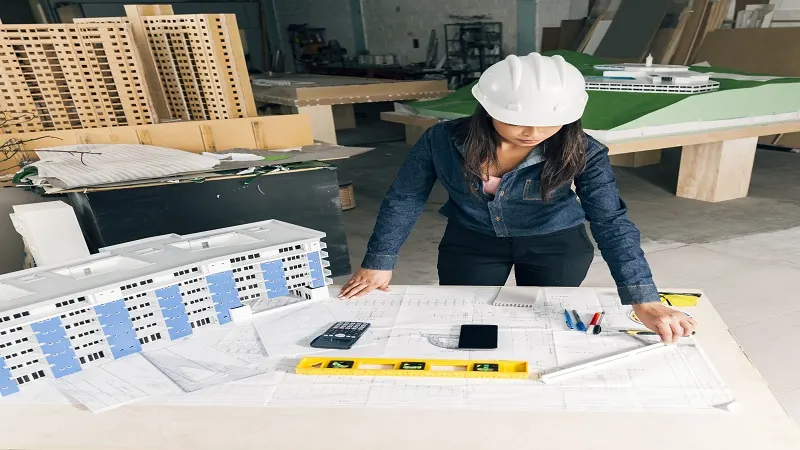A double storey extension is one of the most effective ways to transform your home. It not only adds more space but also maximises your property’s value. Unlike a single-storey extension, this type of project requires more planning, design, and investment. But when done right, it can give you the home you’ve always wanted without the stress of moving.
Here’s what the journey looks like—from the first design ideas to the finished build.
Step 1: Define Your Goals
Before you speak to an architect or builder, get clear on what you want:
- Do you need extra bedrooms, a home office, or a bigger kitchen-dining area?
- Will the new space improve family life, work-life balance, or property value?
- How will the extension connect to the rest of the home?
Having clear goals makes every decision easier, from layout to finishes.
Step 2: Understand Costs
A double-storey extension is a bigger financial commitment than a single-storey one. Costs depend on:
- Size and layout – The larger the footprint, the higher the cost.
- Materials – Brickwork, windows, roofing, and finishes vary in price.
- Labour – Skilled builders and tradespeople are essential for a complex project.
- Extras – Plumbing, electrics, and structural changes add to the budget.
On average, a double storey extension costs more upfront but is often better value in the long run. That’s because you gain twice the space without doubling the cost of foundations and roofing.
Step 3: Check Planning and Regulations
Most double-storey extensions require planning permission. While some smaller projects may fall under permitted development rights, two-storey builds usually exceed these limits. You’ll also need to comply with building regulations covering structure, insulation, fire safety, and energy efficiency.
An architect or planning consultant can help with drawings, applications, and communication with your local council. This step is essential to avoid costly delays later.
Step 4: Work With an Architect
The design stage is where your vision takes shape. A good architect will:
- Translate your ideas into practical, creative designs.
- Suggest layouts that improve flow and natural light.
- Recommend materials that match your existing property.
- Ensure the design meets planning rules and regulations.
This stage sets the foundation for the entire project, so it’s worth investing time and thought here.
Step 5: Secure Permissions
Once you have a final design, submit your planning application. The process usually takes 8–12 weeks. During this time, the council may consult neighbours or request changes.
You’ll also need to notify Building Control, either through a full plans application or a building notice. Their role is to ensure the extension is safe, legal, and built to standard.
Step 6: Choose the Right Builder
A double-storey extension is not a small job. Choosing the right builder is crucial:
- Get recommendations or check online reviews.
- Ask for examples of similar projects they’ve completed.
- Request a detailed quote that includes labour, materials, and timelines.
- Make sure they are insured and accredited.
The cheapest option is rarely the best. Look for a team with proven experience and a reputation for quality.
Step 7: The Build Phase
Once everything is approved and contracts are signed, the building work begins. Here’s what typically happens:
- Site preparation – Clearing the area, setting up access, and preparing foundations.
- Groundworks – Foundations and drainage are laid. This stage is shared with single-storey extensions, which saves money.
- Structure – Walls, floors, and roof are built.
- Services – Plumbing, electrics, and heating are installed.
- Interior finishes – Plastering, flooring, and decorating complete the space.
The build can take anywhere from 16–24 weeks, depending on size, complexity, and weather conditions.
Step 8: Final Checks and Handover
Before moving into your new space:
- A building inspector will carry out a final check.
- You’ll receive a completion certificate confirming compliance with regulations.
- Walk through the extension with your builder to spot any unfinished details.
Only once you’re satisfied should you make the final payment.
Step 9: Enjoy Your New Space
With the dust cleared and furniture in place, your double-storey extension becomes part of your home. It can:
- Provide new bedrooms or a larger master suite upstairs.
- Expand your kitchen, dining, or living areas downstairs.
- Create a better flow between rooms.
- Increase property value, often by more than the cost of the build.
Practical Tips for Success
- Plan early: Rushed designs or permissions cause delays later.
- Budget wisely: Allow at least 10–15% extra for unexpected costs.
- Communicate often: Stay in touch with your builder and architect.
- Think long-term: Design with future needs in mind, not just today.
- Respect neighbours: Keep them informed to avoid disputes.
Key Takeaways
- A double-storey extension gives you significant space and value but requires careful planning.
- Start by clarifying your goals, setting a realistic budget, and understanding planning rules.
- Work with skilled architects and builders to ensure a safe, compliant, and beautiful result.
- Expect the project to take several months from design to completion.
- The investment often pays off in both lifestyle improvements and property value.
A double-storey extension is a journey—from the first design sketches to the final walkthrough. While it’s more complex than smaller projects, the rewards are greater too. With the right planning, professional support, and a clear vision, you can create a home that not only meets your needs today but also grows with you in the future.
